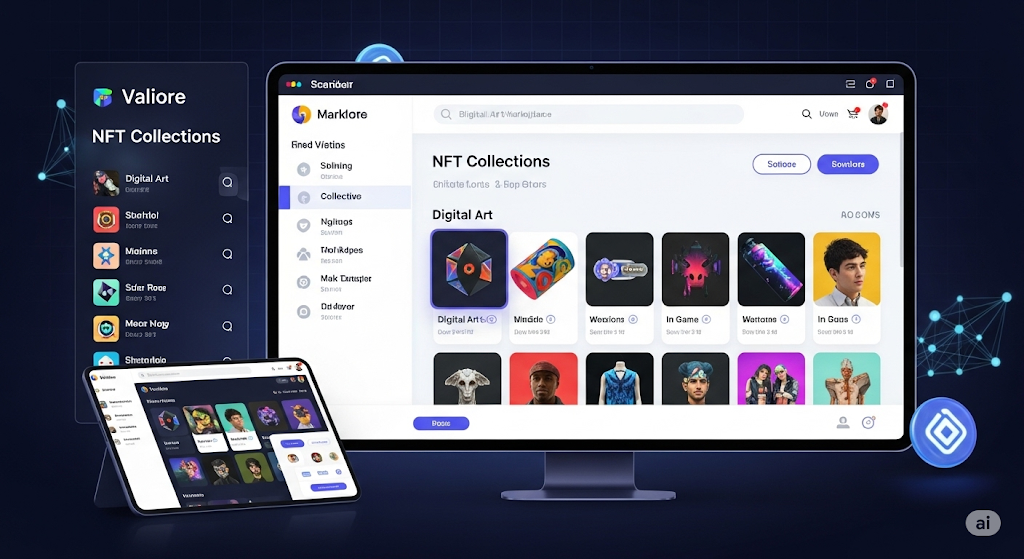In today’s dynamic business environment, having access to flexible financing options is crucial for companies of all sizes. A business line of credit stands out as one of the most versatile funding solutions available to entrepreneurs in India. Unlike traditional loans that provide a lump sum amount, a business line of credit offers a predetermined pool of funds that you can draw from as needed, paying interest only on the amount you use. This flexibility makes it an invaluable tool for managing cash flow, seizing growth opportunities, and navigating seasonal fluctuations.
Whether you’re looking to expand your operations, purchase inventory, or simply prepare for unexpected expenses, understanding how business lines of credit work can significantly enhance your company’s financial strategy. In this comprehensive guide, we’ll explore everything you need to know about securing and maximizing a business line of credit in India.
What is a Business Line of Credit?
A business line of credit is essentially a flexible loan that provides companies with access to a predetermined amount of capital. Think of it as a financial safety net that you can tap into whenever your business needs additional funds. The key difference between a business line of credit and a traditional term loan lies in its revolving nature.
With a business line of credit, you’re approved for a maximum credit limit, similar to a credit card. You can borrow any amount up to that limit, repay it, and then borrow again as needed. This revolving structure provides unparalleled flexibility, as you only pay interest on the funds you actually use, not on the entire approved amount.
For example, if you’re approved for a ₹10 lakh business line of credit, you might initially withdraw ₹3 lakhs for inventory purchases. You’ll only pay interest on that ₹3 lakhs, not the entire ₹10 lakhs. After repaying that amount, you’ll again have access to the full ₹10 lakhs credit limit.
Secured vs. Unsecured Business Line of Credit
Business lines of credit come in two primary forms: secured and unsecured.
Secured lines of credit require collateral, such as property, equipment, or inventory, to back the loan. Because they’re less risky for lenders, secured lines typically offer:
- Lower interest rates
- Higher credit limits
- More favorable terms
- Less stringent approval requirements
Unsecured lines of credit do not require any collateral; instead, they are primarily based on your business’s credit profile and overall financial health. These typically feature:
- Higher interest rates
- Lower credit limits
- Stricter eligibility requirements
- Shorter repayment terms
The choice between secured and unsecured depends on your business’s assets, risk tolerance, and immediate funding needs. Many Indian MSMEs start with unsecured lines for smaller amounts and graduate to secured lines as their funding requirements grow.
Benefits of a Business Line of Credit
A business line of credit offers numerous advantages that make it an attractive financing option for companies across India. Understanding these benefits can help you determine if this funding solution aligns with your business needs.
Flexibility in Borrowing and Repayment
Perhaps the most significant advantage of a business line of credit is its flexibility. Unlike traditional loans that provide a lump sum with fixed monthly payments, a line of credit allows you to:
- Draw funds as needed, only when necessary, ensuring flexibility and control over your borrowing
- Pay interest only on the amount borrowed
- Repay and reborrow funds as necessary
- Adjust your borrowing to match your business cycles
This flexibility is particularly valuable for businesses with fluctuating cash flow needs or seasonal operations. For instance, a retail business might draw on its credit line to stock up inventory before the Diwali shopping season, then repay the funds after the holiday sales period.
Managing Cash Flow Fluctuations
Cash flow gaps can occur in any business, especially when clients delay payments or unexpected expenses arise. A business line of credit serves as an effective bridge during these periods, ensuring you can:
- Meet payroll obligations on time
- Pay suppliers to maintain good relationships
- Cover operational expenses during slow periods
- Maintain business continuity despite temporary shortfalls
For service-based businesses in India that often face delayed payments from clients, having this financial cushion can be the difference between growth and stagnation.
Building Business Credit
Responsible use of a business line of credit can significantly improve your company’s credit profile. By making timely payments and managing your credit line effectively, you can:
- Establish a positive credit history for your business
- Improve your business credit score
- Qualify for larger financing amounts in the future
- Negotiate better terms with lenders and suppliers
This credit-building aspect is especially important for newer businesses in India looking to establish credibility in the financial ecosystem.
Quick Access to Funds
Once approved, a business line of credit provides immediate access to capital without having to apply for new loans each time you need funds. This quick accessibility allows you to:
- Seize unexpected business opportunities
- Respond rapidly to market changes
- Address emergencies without delay
- Make time-sensitive purchases or investments
In India’s fast-paced business environment, this agility can provide a significant competitive advantage, especially for startups and growing enterprises.
How to Qualify for a Business Line of Credit in India
Securing a business line of credit requires meeting certain eligibility criteria that vary by lender. However, understanding the common requirements can help you prepare a stronger application and increase your chances of approval.
Credit Score Requirements
Both your business and personal credit scores significantly impact the approval outcome. Most Indian lenders look for:
- A personal credit score of at least 670 (CIBIL score)
- A business credit score showing positive payment history
- No recent defaults or bankruptcies
- Limited credit inquiries in the past six months
If your credit score isn’t ideal, consider working with alternative lenders or fintech platforms that may have more flexible requirements, though potentially at higher interest rates.
Time in Business Requirements
Lenders typically prefer businesses with established operating histories. Common requirements include:
- Traditional banks: 2+ years in business
- Alternative lenders: 6-12 months in business
- Fintech platforms: Sometimes as little as 3-6 months
Newer businesses may need to demonstrate stronger revenue or provide additional security to compensate for their limited operating history.
Revenue Thresholds
Consistent revenue is a key indicator of your ability to repay. Most lenders in India require:
- Annual revenue of at least ₹10-25 lakhs for smaller lines of credit
- Higher revenue requirements (₹50 lakhs+) for larger credit lines
- Stable or growing monthly revenue patterns
- Healthy profit margins and cash flow
Business lines of credit typically fall into two primary categories: secured and unsecured. Businesses with seasonal fluctuations should be prepared to explain these patterns and demonstrate how they manage through slower periods.
Documentation Needed for Business Line of Credit
Be prepared to provide comprehensive documentation, including:
- Business registration documents (incorporation certificate, partnership deed, etc.)
- GST registration and returns
- Income tax returns for the business (2-3 years)
- Bank statements (6-12 months)
- Financial statements (balance sheet, profit & loss)
- Business plan (especially for newer businesses)
- Collateral documentation (for secured lines of credit)
Having these documents organized and ready can significantly speed up the application process.
Leading Lenders Providing Business Line of Credit in India
India’s financial landscape offers numerous options for businesses seeking lines of credit. Here’s a comparison of some leading providers:
Traditional Banks
HDFC Bank offers business lines of credit with competitive interest rates starting from 10.5% per annum. Their credit lines typically require:
- Minimum 2 years in business
- Annual turnover of ₹50 lakhs or more
- Credit limits ranging from ₹10 lakhs to ₹5 crores
- Collateral for larger amounts
ICICI Bank provides flexible business credit lines with features including:
- Interest rates from 11% per annum
- Digital application and account management
- Integration with business current accounts
- Overdraft facilities against fixed deposits
State Bank of India (SBI) provides credit lines tailored for SMEs with:
- Competitive rates for established businesses
- Special programs for manufacturing sectors
- Lower collateral requirements for priority sectors
- Relationship-based pricing for long-term customers
Fintech and Alternative Lenders
Razorpay Capital has emerged as a popular option for digital businesses with:
- Quick digital application process
- Approval in as little as 48 hours
- Credit limits based on business cash flows
- Integration with payment processing data
Volopay offers modern business credit solutions featuring:
- One of the fastest credit checks in the market
- Flexible repayment intervals
- Integration with expense management tools
- No collateral requirements for qualified businesses
Amazon Business Line of Credit provides specialized financing for businesses selling on Amazon with:
- Credit decisions based on Amazon selling history
- Competitive interest rates for qualified sellers
- Seamless integration with Amazon seller accounts
- Credit limits that can grow with your Amazon business
When selecting a lender, consider not just the interest rates but also fees, repayment terms, customer service quality, and digital banking capabilities that align with your business operations.
Application Process Step-by-Step
The process of applying for a business line of credit includes several essential steps. Following this process carefully can improve your chances of approval and help you secure the best possible terms.
Preparing Your Documentation
Before beginning the application, gather all necessary documents:
- Business and personal identification documents
- Financial statements and tax returns
- Bank statements showing cash flow
- Business licenses and registrations
- Collateral documentation (if applicable)
- Business plan or growth projections
Organizing these documents in advance will streamline the application process and demonstrate your professionalism to potential lenders.
Completing the Application
Most lenders now offer online applications, though some traditional banks may still require in-person meetings. When completing your application:
- Be thorough and accurate with all information
- Explain any potential red flags in your financial history
- Clearly explain your intended use of the funds
- Highlight your business strengths and growth potential
- Be realistic about the credit limit you’re requesting
Many Indian lenders now offer pre-qualification tools on their websites that can give you an initial indication of eligibility without affecting your credit score.
Verification Process
After submitting your application, the lender will verify your information through:
- Credit checks (both business and personal)
- Verification of financial statements
- Confirmation of business operations and revenue
- Assessment of collateral value (for secured lines)
- Possible site visits for larger credit lines
Be prepared to respond promptly to any requests for additional information during this stage.
Approval Timeline
The time from application to approval varies significantly by lender:
- Fintech lenders: As quick as 24-48 hours
- Alternative lenders: Typically 3-5 business days
- Traditional banks: Often 1-3 weeks
- Larger credit lines: May take 30+ days
If your funding needs are urgent, consider applying with multiple lenders simultaneously or prioritizing those known for faster processing times.
Accessing Your Credit Line
Once approved, you’ll need to complete final documentation to activate your credit line. Access methods typically include:
- Online banking transfers to your business account
- Dedicated credit line cards or checks
- Mobile banking apps for on-the-go access
- Integration with accounting software (with some fintech lenders)
Familiarize yourself with your lender’s specific withdrawal and repayment processes to maximize the convenience of your credit line.
Strategies for Maximizing the Benefits of a Business Line of Credit
Having access to a business line of credit is valuable, but using it strategically is essential for maximizing its benefits while minimizing costs.
Strategic Uses for Growth
A business line of credit can support a range of growth initiatives:
- Expanding to new locations or markets
- Purchasing equipment to increase production capacity
- Hiring additional staff during growth phases
- Investing in marketing and customer acquisition
- Developing new products or services
The key is to use the funds for investments that will generate returns exceeding the cost of borrowing.
Emergency Fund Planning
Maintaining an unused portion of your credit line as an emergency fund is a prudent strategy:
- Reserve 20-30% of your credit limit for unexpected situations
- Create clear guidelines for what constitutes an emergency
- Develop a repayment plan before tapping emergency funds
- Consider alternative emergency funding sources as backups
This approach ensures you have financial resources available when truly needed without depleting your entire credit line.
Inventory Management
For retail and manufacturing businesses, a line of credit can optimize inventory management:
- Purchase inventory in bulk to secure volume discounts
- Stock up ahead of peak selling seasons
- Take advantage of supplier promotions
- Bridge gaps between inventory purchases and sales revenue
Ideally, inventory purchased with credit line funds should sell quickly enough to generate the cash needed for repayment.
Managing Seasonal Fluctuations
Businesses with seasonal patterns can use credit lines to smooth out cash flow:
- Draw on the credit line during slow seasons
- Repay during peak revenue periods
- Maintain consistent operations year-round
- Avoid layoffs and rehiring cycles
This approach is particularly valuable in India’s festival-driven retail economy, where certain periods see dramatically higher sales volumes.
Avoiding Common Mistakes
Be careful to avoid these common pitfalls when using a business line of credit:
- Using credit for regular operational expenses
- Constantly maintaining a maximum balance
- Mixing business and personal expenses
- Making minimum-only payments for extended periods
- Using the credit line for non-revenue-generating purposes
Remember that a business line of credit is most effective when used strategically rather than as a permanent funding source.
Costs and Fees to Consider
Understanding the full cost structure of a business line of credit is essential for making informed borrowing decisions.
Interest Rates and How They’re Calculated
Interest rates for business lines of credit in India typically range from 10% to 18% per annum, depending on various factors:
- Your business’s credit profile and financial strength
- Whether the line is secured or unsecured
- The lender’s policies and risk assessment
- Current market conditions and RBI rates
Typically, lenders charge interest solely on the amount you’ve borrowed, not on the full credit limit. Interest may be calculated daily, monthly, or quarterly, significantly affecting your total cost.
Annual/Monthly Maintenance Fees
Numerous lenders impose regular fees to keep your credit line active:
- Annual maintenance fees: Typically 0.5% to 2% of the credit limit
- Monthly service charges: Often ₹500-2,000 depending on the credit limit
- Unused line fees: Some lenders charge for portions of the credit line that remain unused
These fees apply regardless of whether you use the credit line, so factor them into your total cost calculations.
Draw Fees
Some lenders charge fees each time you draw funds from your credit line:
- Percentage-based fees: Typically 0.25% to 1% of the amount drawn
- Flat fees: Often ₹500-1,000 per transaction
- Tiered fees based on withdrawal amount
If you anticipate frequent draws, prioritize lenders with low or no draw fees.
Late Payment Penalties
Missing payments can result in significant penalties:
- Late payment fees: Often 2-5% of the missed payment amount
- Penalty interest rates: May increase by 2-6 percentage points
- Negative credit reporting after 30+ days late
- Potential reduction in credit limit
Setting up automatic payments can help avoid these costly penalties.
Prepayment Options
Understanding prepayment terms is important for managing your credit line efficiently:
- Some lenders charge prepayment penalties, especially in the first year
- Others offer interest savings for early repayment
- Minimum holding periods may apply before prepayment is allowed
- Partial prepayments may be treated differently than full repayments
If you anticipate being able to repay quickly, prioritize lenders with favorable prepayment terms.
Alternatives to Business Line of Credit
While business lines of credit offer many advantages, they’re not the only financing option available. Consider these alternatives based on your specific needs:
Term Loans
Conventional term loans offer a one-time lump sum disbursement accompanied by fixed repayment terms:
- Best for: Large, one-time expenses like major equipment purchases or real estate
- Advantages: Fixed interest rates, predictable payments, potentially lower rates than lines of credit
- Disadvantages: Less flexibility, interest paid on entire amount regardless of when funds are used
Many businesses maintain both a term loan for specific investments and a line of credit for ongoing flexibility.
Business Credit Cards
Business credit cards offer revolving credit with additional features:
- Best for: Smaller, frequent expenses and building credit history
- Advantages: Rewards programs, expense tracking, no collateral requirements
- Disadvantages: Higher interest rates, lower credit limits, potential annual fees
Business credit cards work well alongside lines of credit, with cards handling smaller purchases and the credit line covering larger needs.
Invoice Financing
Invoice financing allows you to borrow against outstanding customer invoices:
- Best for: Businesses with long payment cycles from creditworthy customers
- Advantages: Improves cash flow, financing based on invoice value rather than business credit
- Disadvantages: Higher fees, potential customer relationship complications
This option is particularly popular among B2B service providers and manufacturers in India.
Merchant Cash Advances
Merchant cash advances provide upfront funding repaid through a percentage of daily sales:
- Best for: Retail and restaurant businesses with consistent daily card sales
- Benefits: Include fast approval and repayment flexibility aligned with sales performance
- Disadvantages: Higher effective interest rates, daily repayment impact on cash flow
While convenient, merchant cash advances typically have higher costs than traditional lines of credit.
Venture Capital/Angel Investment
For high-growth startups, equity financing may be an alternative:
- Best for: Scalable businesses with significant growth potential
- Advantages: No repayment obligation, potential mentorship and connections
- Disadvantages: Dilution of ownership, loss of some control, high investor expectations
How to Use a Business Line of Credit Effectively Unlike debt options, equity financing doesn’t require repayment but does mean sharing ownership and future profits.
Also Read | Best SBI Credit Card to Maximize Cashback and Reward Points
Tips for Improving Approval Chances
If you’re preparing to apply for a business line of credit, these strategies can help strengthen your application:
Building Business Credit
EBuilding a solid business credit profile is a gradual process that yields long-term benefits:
- Register your business formally and obtain a GST number
- Open a business bank account and keep it separate from personal finances
- Apply for a small business credit card and use it responsibly
- Work with suppliers who report payment history to credit bureaus
- Pay all bills and existing credit obligations on time
Even a few months of positive credit history can significantly improve your chances of approval.
Improving Financial Statements
Lenders scrutinize your financial statements closely, so take steps to strengthen them:
- Ensure accurate and up-to-date bookkeeping
- Reduce unnecessary expenses before applying
- Improve your debt-to-income ratio
- Increase liquid assets when possible
- Work with an accountant to present financials optimally
Clean, professional financial statements not only improve approval odds but may also help secure better terms.
Strengthening Cash Flow
Demonstrating strong cash flow management is crucial:
- Implement more efficient invoicing and collection processes
- Negotiate better payment terms with suppliers
- Reduce inventory holding costs where possible
- Document seasonal patterns with explanations
- Show consistent revenue growth over time
Lenders are more confident extending credit to businesses that effectively manage their cash flow.
Preparing a Solid Business Plan
A well-crafted business plan demonstrates your vision and preparation:
- Include clear financial projections with realistic assumptions
- Explain specifically how the credit line will be used
- Demonstrate how the funding will generate returns
- Address potential risks and mitigation strategies
- Highlight your industry experience and management team strengths
Even if not explicitly required, providing a business plan shows professionalism and thorough planning.
Choosing the Right Lender for Your Situation
Not all lenders are equally suitable for every business:
- Research lenders specializing in your industry or business size
- Consider alternative lenders if traditional banks have declined you
- Look for lenders offering pre-qualification without hard credit pulls
- Seek recommendations from business associates in similar situations
- Compare multiple options before committing to an application
Finding the right match between your business profile and a lender’s preferences can significantly improve your approval odds.
Frequently Asked Questions
What minimum credit score is required to qualify for a business line of credit?
In India, most traditional lenders require a CIBIL score of at least 700 for the business owner, though some alternative lenders may approve scores as low as 650. For established businesses with strong revenue, lenders may place less emphasis on personal credit scores and focus more on business performance metrics.
How long does approval take?
Approval timelines vary significantly by lender. Fintech platforms may provide decisions in as little as 24-48 hours, while traditional banks typically take 1-3 weeks. Larger credit lines or those requiring extensive documentation may take 30+ days for full approval. Having all documentation prepared in advance can help expedite the process.
Are startups eligible to obtain a business line of credit?
Startups with less than six months of operating history face challenges securing traditional business lines of credit. However, options do exist, including founder-guaranteed lines, startup-focused fintech lenders, and secured lines backed by assets or fixed deposits. New businesses should focus on building a banking relationship, establishing business credit, and demonstrating consistent revenue before applying.
How do secured and unsecured lines of credit differ?
Secured lines of credit require collateral (property, equipment, inventory, or fixed deposits) that the lender can claim if you default. They typically offer lower interest rates and higher credit limits. Unsecured lines of credit don’t need collateral, but they depend on your credit profile and typically come with higher interest rates and lower borrowing limits. The choice depends on your available assets, risk tolerance, and funding needs.
How much can I typically borrow with a business line of credit?
In India, small business lines of credit typically range from ₹5 lakhs to ₹50 lakhs, while established mid-sized businesses may qualify for ₹50 lakhs to ₹5 crores or more. The amount depends on factors including business revenue (typically 10-20% of annual revenue), credit history, time in business, and whether the line is secured or unsecured.
Is collateral required to secure a business line of credit?
Not necessarily. Many lenders offer unsecured business lines of credit based on your business’s financial strength and credit history. However, providing collateral typically results in lower interest rates, higher credit limits, and improved approval odds. For credit lines exceeding ₹25-50 lakhs, most Indian lenders will require some form of collateral.
Also Read | 3 Ways How to Get the Best Credit Cards for Students
Final Thoughts
A business line of credit represents one of the most flexible and valuable financial tools available to Indian entrepreneurs and business owners. When used strategically, it can help manage cash flow challenges, fuel growth opportunities, and provide crucial financial stability during uncertain times.
Establishing a strong business credit profile takes time but pays dividendsThe key to success with a business line of credit lies in understanding its purpose—it’s not meant to be a permanent source of funding for regular operations, but rather a strategic resource to be drawn upon when needed and repaid promptly. By maintaining discipline in its use and staying vigilant about costs, you can leverage this powerful financial tool to strengthen your business’s position in the market.
As India’s financial ecosystem continues to evolve, with traditional banks facing competition from innovative fintech lenders, businesses have more options than ever for securing flexible financing. Take the time to research your options thoroughly, prepare a strong application, and develop a clear plan for utilizing your credit line. With the right approach, a business line of credit can become an invaluable asset in your company’s financial strategy.







Leave a Reply